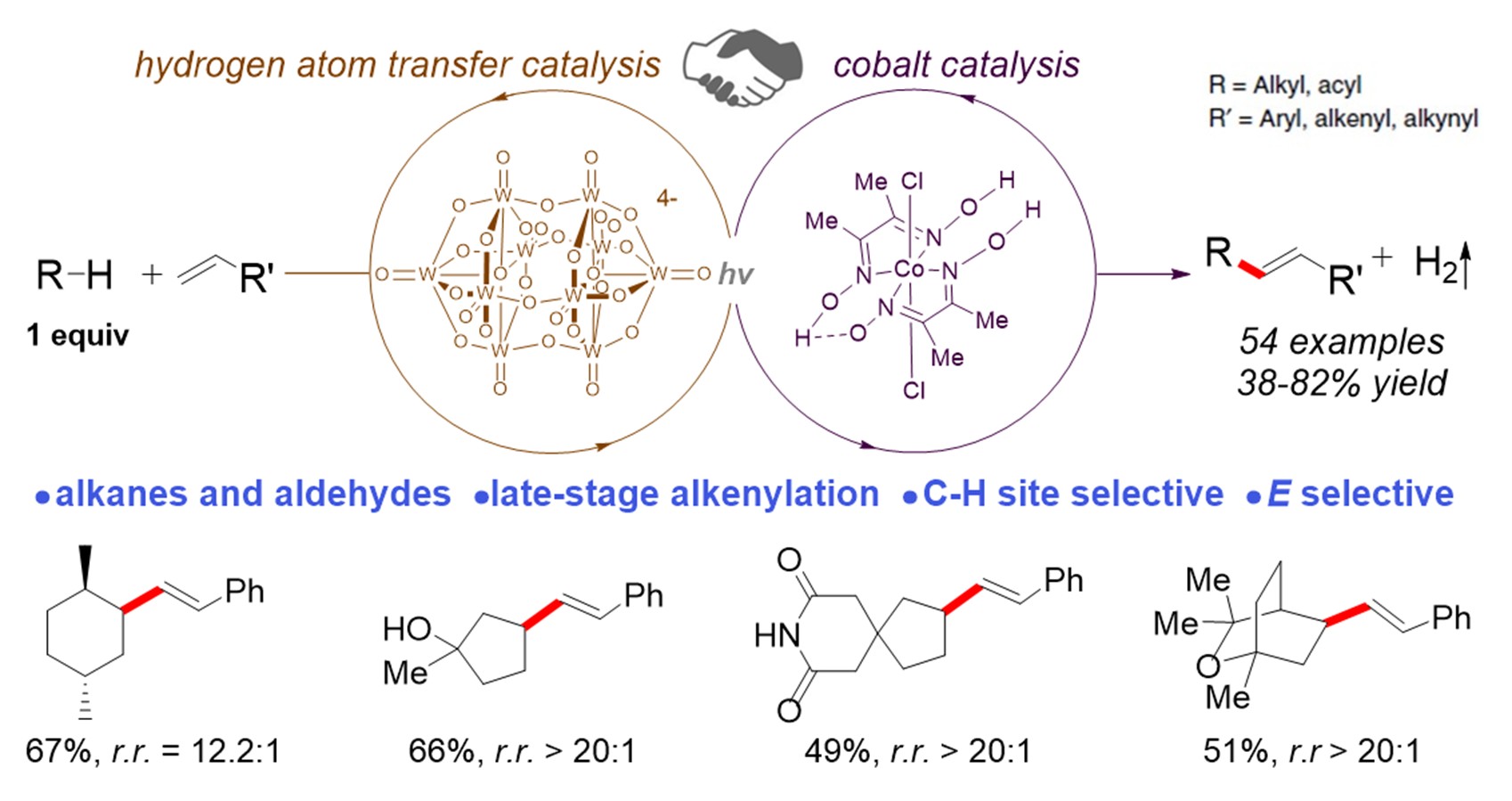
Illustration showing (top) the site-selective late-stage C-H alkenylation through the use of synergistic hydrogen atom transfer and cobalt catalysis in the presence of light (hv). (Bottom) Selection of chemical products that can be synthesised from this method.
A research team led by Professor Wu Jie from the Department of Chemistry, NUS has developed a photocatalytic process for direct alkenylation of C-H bonds in alkanes and aldehydes. In the past decades, transition-metal-catalysed alkenylations of arenes and heteroarenes have been extensively studied. However, analogous transformations of alkanes and aldehydes remain very challenging. The existing methods generally suffer from the use of noble metal, stochiometric amounts of oxidants and large excess of C-H substrates. To solve these issues, the research group used a combination of two types of catalytic methods, the direct hydrogen atom transfer catalysis (with a decatungstate anion, [W10O32]4−) and the cobaloxime catalysis, for the direct activation and alkenylation of alkanes and aldehydes. When these two catalysts work synergistically in the presence of light, a diverse range of cheap feedstocks can be easily transformed into valuable olefins. Other advantages of this strategy include a broad substrate scope, high C-H site selectivity, excellent trans selectivity of the alkene products, and the use of the C-H substrate as the limiting reagent. Moreover, this strategy can be applied in the selective late-stage functionalisation of natural products and important pharmaceutical molecules.
Professor Wu said, “The site-selective late-stage functionalisation of C-H bonds in complex molecules developed from our studies is a very useful class of reactions. This method could potentially find broad application in olefin synthesis, structural modification of pharmaceuticals and natural product synthesis.” The research team plans to develop more advanced catalytic processes for the late-stage functionalisation of carbon-hydrogen bonds. Read more about their new discovery here.
